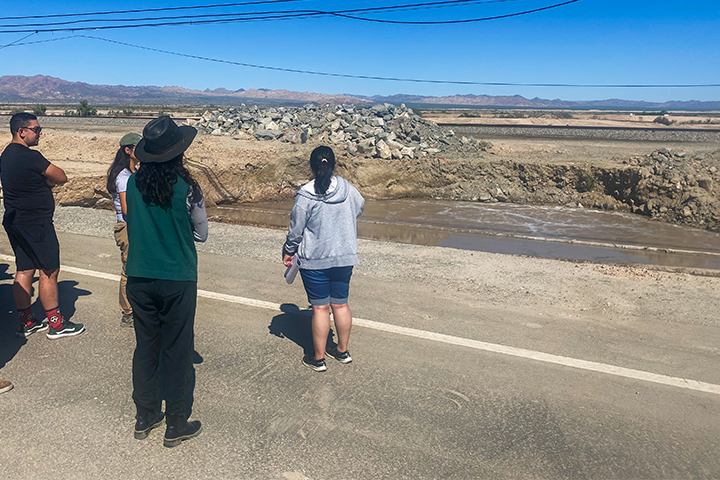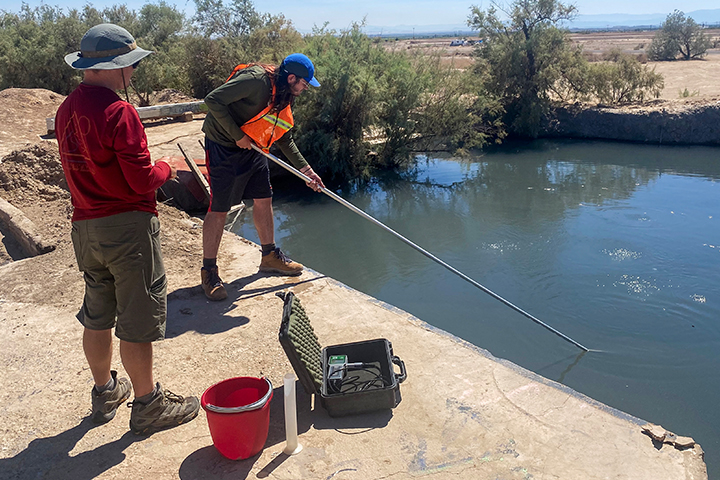Cal State LA Professor Dr. Barry J. Hibbs has published a new study that sheds light on one of California’s most mysterious natural features: a mud spring that moves across the desert near the Salton Sea.
Known as the Niland mud spring, or “The Slow One,” this rare phenomenon has been slowly shifting southwest over the past decade, crossing train tracks, pipelines, and highways in Imperial County, and has caused significant damage and expense due to the need for constant mitigation and realignment. Its unusual mobility has drawn the attention of scientists, engineers, and public officials who seek to understand why it moves, what it reveals about the subsurface, and how to protect critical rail and road infrastructure in its path.
In his new article in Geohazards, titled “Driving Processes of the Niland Moving Mud Spring: A Conceptual Model of a Unique Geohazard in California’s Eastern Salton Sea Region,” Hibbs presents a new explanation for the spring’s movement. Earlier studies suggested that postulated faults or soft sediment features erode over time, forcing the spring to shift. Hibbs’ research identifies a different cause: the drying of the Salton Sea and the receding shoreline, which have altered the local water table around the mud spring. According to his new hypothesis, as the Salton Sea’s surface level has dropped by about 4.1 meters since 2002, the moving mud pond first appeared and began to migrate in the same direction, and at a rate proportional to the Sea’s decline. Hibbs integrates water isotopes and age-dating radioisotopes to support his conceptual model, offering new insight into how regional groundwater dynamics and surface changes drive this one-of-a-kind geologic phenomenon.
The Niland mud spring is the only known example in the world of a mud pot that travels, making it an important site for research. Understanding how it works can help scientists predict how gas and groundwater move in other active geological areas. The findings could also help protect infrastructure near the Salton Trough, where roads, railways, and pipelines are vulnerable to these types of natural shifts.
Read the study on MDPI.com


